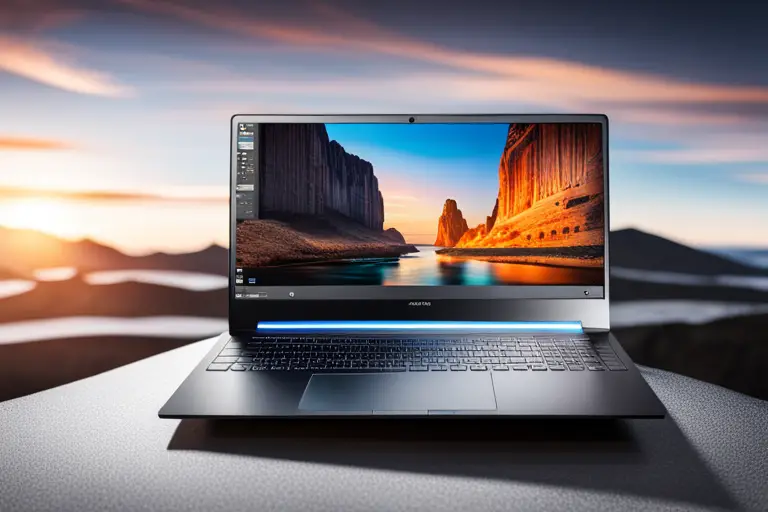Are you tired of your laptop’s slow performance? Upgrading your laptop’s RAM may be the solution you’re looking for. RAM, or Random Access Memory, plays a crucial role in your laptop’s performance by providing temporary storage for data that your laptop is currently using.
The more RAM your laptop has, the more data it can store and access quickly, resulting in faster performance and smoother multitasking.
Upgrading your laptop’s RAM can bring a range of benefits, including faster boot times, quicker application launches, and improved overall performance. However, before you rush to buy more RAM, it’s important to understand the compatibility considerations and potential risks involved in the process.
In this article, we’ll explore the risks and rewards of boosting your laptop’s RAM for higher performance, and provide you with tips and tricks to maximize the benefits of your upgraded RAM.
Understanding RAM and Its Role in Your Laptop’s Performance
RAM is crucial for your laptop’s performance, and boosting it can greatly improve your overall experience. RAM, which stands for Random Access Memory, is essentially your laptop’s short-term memory. It allows your device to access data quickly, store temporary files, and run multiple programs at once.
Without enough RAM, your laptop may experience slow loading times, lagging, and even crashes. Upgrading your laptop’s RAM can provide a significant boost in performance, especially if you tend to use memory-intensive programs such as video editing software or virtual machines. More RAM allows your laptop to handle more tasks simultaneously, which can speed up your workflow and improve overall productivity.
Additionally, if you frequently run into issues with your laptop freezing or crashing due to insufficient memory, upgrading your RAM can help prevent those problems and provide a more stable experience.
Benefits of Upgrading Your Laptop’s RAM
By increasing the amount of memory in your portable computer, you can enjoy faster and smoother multitasking, allowing you to get more done in less time. With more RAM, your laptop can store more data and programs in its memory, reducing the need for it to access the hard drive repeatedly. This means that you can run more applications simultaneously without experiencing any lag or slowdowns.
You can also switch between programs seamlessly, without having to wait for them to load or close. In addition to improving multitasking, upgrading your laptop’s RAM can also enhance its overall performance. With more memory, your computer can process data faster, resulting in quicker response times and faster boot-up speeds.
You can also run more demanding applications, such as video editing software or games, without worrying about your laptop crashing or freezing. Overall, upgrading your laptop’s RAM can give you a significant boost in productivity and performance, making it a worthwhile investment for anyone looking to get the most out of their portable computer.
Compatibility Considerations: Is Your Laptop Ready for More RAM?
Before you rush to upgrade, it’s important to ensure that your laptop is compatible with the new memory modules.
The first thing you need to check is the maximum amount of RAM your laptop can handle. This information can usually be found in the laptop’s manual or on the manufacturer’s website. If you exceed the maximum capacity, your laptop may not recognize the additional RAM or even fail to boot up.
Another important factor to consider is the type of RAM your laptop requires. There are different types such as DDR3, DDR4, and LPDDR3, and they’re not interchangeable. You need to make sure that you purchase the correct type of RAM for your laptop.
Additionally, you need to ensure that the new RAM modules match the speed of your laptop’s existing RAM. Mismatched speeds can lead to system instability and crashes. Taking the time to check compatibility before upgrading can save you from potential headaches and expenses down the line.
Steps to Upgrade Your Laptop’s RAM
First things first, you’ll want to gather the necessary tools and equipment, such as a screwdriver and the new RAM modules, to successfully upgrade your laptop’s memory. You’ll also want to make sure you have the right type of RAM for your laptop. This can usually be found in your laptop’s manual or by doing a quick online search using your laptop’s model number.
Once you have everything you need, the first step is to turn off your laptop and unplug it from any power source.
Then, locate the RAM compartment on your laptop. This is usually located on the bottom of your laptop and can be identified by a small panel with screws. Use your screwdriver to remove the screws and lift the panel to reveal the RAM slots.
Carefully remove the old RAM modules by pushing down on the clips on either side of the module and pulling it out.
Then, insert the new RAM modules by aligning the notches on the module with the notches on the slot and pushing down until the clips snap into place.
Finally, replace the panel and screws, plug in your laptop, and turn it on.
Congratulations, you’ve successfully upgraded your laptop’s RAM!
Potential Risks and How to Avoid Them
To ensure a smooth upgrading process, you’ll want to take precautions and avoid damaging your laptop’s components.
One potential risk when upgrading your laptop’s RAM is static electricity. Before you begin, make sure to ground yourself by touching a metal object that’s connected to the ground. You can also purchase an anti-static wristband or mat to further protect against static discharge.
Another risk is installing the wrong type of RAM or not installing it correctly. Make sure to research and purchase the correct type of RAM for your laptop and follow the manufacturer’s instructions carefully.
If you’re unsure about the process, consider consulting a professional or a knowledgeable friend. By taking these precautions and avoiding potential risks, you can upgrade your laptop’s RAM and enjoy the rewards of improved performance.
Cost Analysis: Is Upgrading Your Laptop’s RAM Worth It?
You may be surprised to find out that upgrading your laptop’s memory can be a cost-effective solution to improve your overall computing experience.
The cost of upgrading your laptop’s RAM will depend on several factors such as the brand, model, and capacity of the memory module. However, in general, the cost of RAM has been decreasing over the years and is now more affordable than ever before.
While the cost of upgrading your laptop’s RAM can vary, the benefits of doing so are clear. With more RAM, your laptop can handle more applications at once, and you can switch between tasks without experiencing lag or slowdowns.
This means you can be more productive and get more done in less time. So, if you’re looking to boost your laptop’s performance without breaking the bank, upgrading your RAM might be the way to go.
Maximize the Benefits of Your Upgraded RAM: Tips and Tricks for Optimal Performance
Don’t settle for a mediocre computing experience – get the most out of your upgraded memory by implementing these tips and tricks for lightning-fast multitasking and seamless application switching.
First, make sure to close any unnecessary applications or background processes before launching new ones. This helps minimize the strain on your RAM and allows your system to allocate more resources to the tasks at hand.
Additionally, try to avoid opening too many tabs or windows in your web browser as this can also eat up a significant amount of memory. If you need to work with multiple pages, consider using browser extensions that allow you to group and manage tabs more efficiently.
Finally, consider upgrading other components of your laptop such as your hard drive or processor to achieve even better performance gains.
With these simple tips, you can maximize the benefits of your upgraded RAM and enjoy a smoother, more productive computing experience.
Frequently Asked Questions
What is the difference between RAM and storage capacity in a laptop?
RAM and storage capacity are two different things in a laptop. RAM is a temporary memory that helps run programs and perform tasks, while storage capacity is the amount of data that can be stored permanently on the device.
How much RAM is too much for a laptop?
You don’t necessarily need more than 8GB of RAM for most laptop tasks, but if you’re a power user or a gamer, 16GB is the sweet spot. Anything over 32GB is overkill for a laptop.
Can upgrading RAM void a laptop’s warranty?
Upgrading your laptop’s RAM can potentially void the warranty, as it involves opening up the device and making changes to the hardware. It’s important to check with the manufacturer before making any upgrades.
Will upgrading RAM affect the battery life of a laptop?
Upgrading RAM can affect your laptop’s battery life. More RAM means more power consumption, so you may need to charge your laptop more frequently. However, the impact on battery life is typically minimal.
Can upgrading RAM improve the graphics performance of a laptop?
Yes, upgrading RAM can improve graphics performance on your laptop. This is because RAM helps the computer process and store graphical data more efficiently, resulting in smoother and faster graphics.
Conclusion
Congratulations on making it to the end of this article about the risks and rewards of boosting your laptop’s RAM for higher performance! By now, you should have a clear understanding of what RAM is and the benefits of upgrading it. You should also be aware of the potential risks involved.
If you’ve decided to take the plunge and upgrade your laptop’s RAM, make sure to do your research and follow the steps carefully to avoid any potential problems. Remember, upgrading your RAM can improve your laptop’s performance and make it run smoother. However, it may not be worth the cost if you’re not using your laptop for resource-intensive tasks.
Whatever your decision, we hope this article has helped you make an informed choice about your laptop’s RAM.

Hey there, tech enthusiasts! I’m your go-to content writer, delving into the fascinating world of technology hacks. Get ready to unlock mind-blowing secrets and discover innovative solutions through my engaging and insightful blogs.


